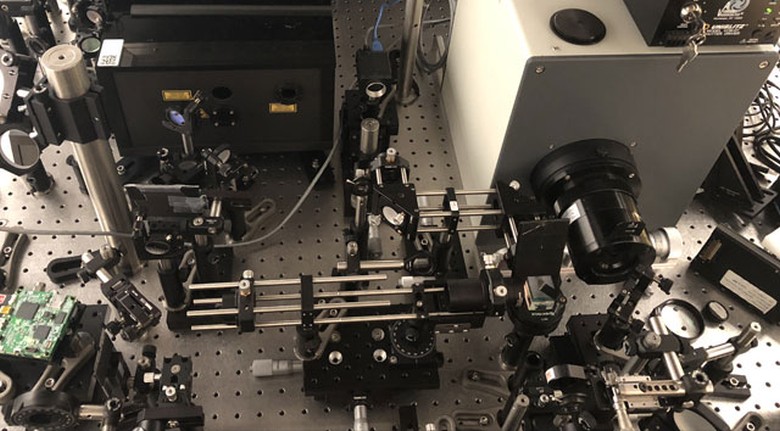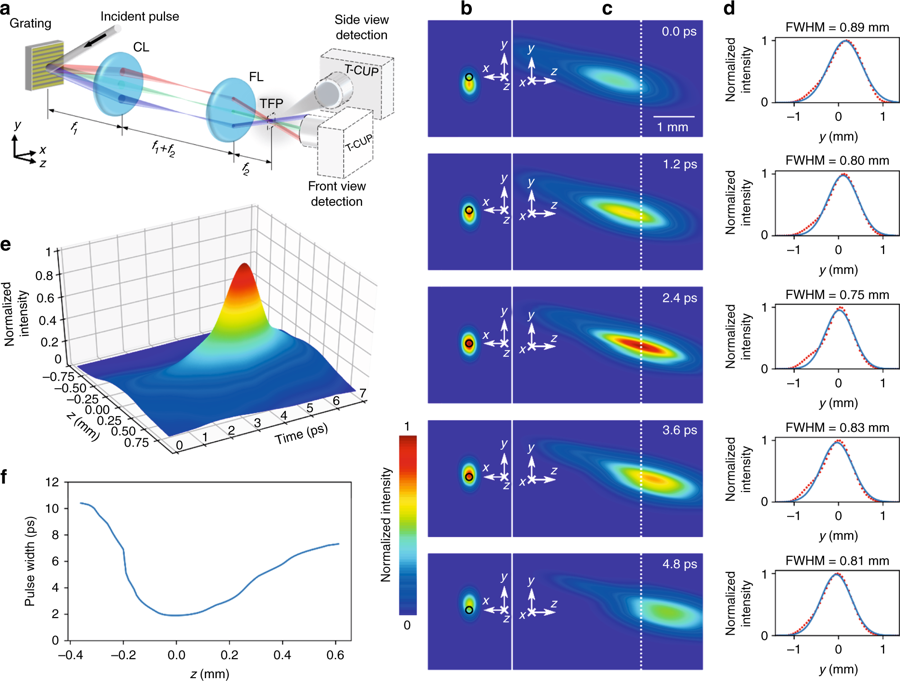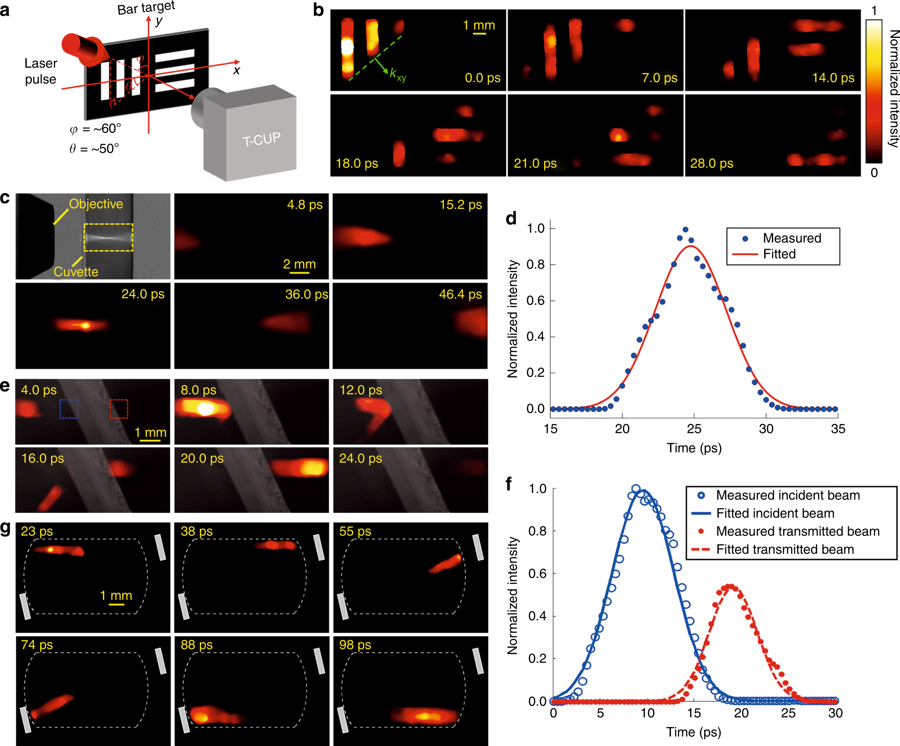The world's fastest camera shoots 10 trillion frames per second

T-CUP Super Speed Camera
Scientists from the National Research Institute (Canada) and the California Institute of Technology have developed the world's fastest video camera T-CUP , which shoots at a speed of 10¹³, that is, 10 trillion frames per second. This device allows you to literally freeze time, that is, to visualize phenomena (and even light) at a very slow pace.
High-speed cameras open the door to new and highly effective methods of microscopic analysis of dynamic phenomena in biology and physics. For example, you can study in detail the processes in a living cell or the movement of molecules.

Principle of operation T-CUP
The camera uses lasers that produce ultrashort pulses in the femtosecond range (10 -15 s). Femtolasers are only half the battle. To use them in a video camera, there must be a way to record images in real time with a very short time resolution. The creation of the T-CUP was made possible thanks to innovations in nonlinear optics and visualization technologies.
Using modern imaging techniques, measurements using ultrashort laser pulses should be repeated many times, which is suitable for some types of inert samples, but impossible for other more fragile ones. For example, laser engraved glass can withstand only one laser pulse, so researchers have less picoseconds to capture the results. In other words, the visualization method must be able to cover the whole process in real time.
Compressed ultrafast photography (compressed ultrafast photography, CUP) has become a good starting point. This method allowed to reach 100 billion frames per second, it was told on Habréin 2014. However, the technology had fundamental limitations, for overcoming of which an improved T-CUP system was developed, which increased the speed by several orders of magnitude. Here a high-speed femtosecond photo synchronograph, as in tomography, is used in conjunction with a camera that records a static image. In this combination, researchers were able to use the so-called Radon transform to produce high-quality images at speeds of up to ten trillion frames per second (the Radon transform is an integral transform of a function of many variables, akin to the Fourier transform).

The process of temporal focusing of a single femtosecond laser pulse
Why do you need it?
Setting a world record for imaging speed, T-CUP can lead to the emergence of a new generation of microscopes for biomedicine, materials science and other applications. This camera represents a fundamental shift. It makes it possible to analyze interactions between light and matter with unprecedented temporal resolution.
For the first time, the video camera took off the process of time focusing of a single femtosecond laser pulse in real time (in the photo above). This process is recorded in 25 frames with an interval of 400 femtoseconds: the shape, intensity and angle of inclination of the light pulse are seen in detail in it.

T-CUP video frames
The photographs above show: a laser pulse that travels tilted through the grating (b); spatial focusing of a single laser pulse (s), a laser pulse of 7 picoseconds duration that flies through a 50:50 splitter in a small cloud of water vapor (e); laser pulse, which is reflected from two mirrors (g). In the first case, the video was shot at a maximum speed of 10 Tfps, in the second and third series of frames - by 2.5 Tfps, and in the last series of frames - “only” at 1 trillion frames per second.
Description of their development, scientists have published in the journal Nature. Along with the scientific work in the open access is a few videos , here is one of them .
“This is an achievement in itself,” saysthe lead author of the scientific work is Jinyan Liang, - but we already see opportunities to increase the speed to one quadrillion (10 15 ) frames per second. ” Researchers believe that at this speed you can learn the secrets of the interaction of light and matter that have not yet been discovered. For example, it is possible to record in detail the scattering of molecules during an explosion, the propagation of light rays and other interesting things.
By the way, security experts expect that the camera at this speed will allow you to shoot objects that are not in direct line of sight , that is, to literally shoot the enemy from around the corner ( video demonstration ). So such devices can be used not only in theoretical physics, but also in very real, useful devices.

